How to install solar panels yourself on your roof. (It’s easier than you think)
Learn more about DIY Solar and how you can save:
We've changed our name from Wholesale Solar to Unbound Solar. Visit us at to skip the search & become a solar expert fast.
Ready to buy now? Find your complete solar panel kits and pricing here:
We design and sell complete solar system kits for projects large and small:
→ Home Power
→ Off-Grid Power
→ Grid-tied Power (Residential)
→ Grid-tied with Battery Backup
→ Grid-tied (Commercial)
→ Remote Industrial Power
→ Marine RV power systems
→ Back-up Power
Ready to buy now? Find your complete solar panel kits and pricing here:







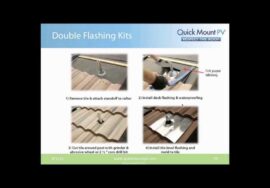

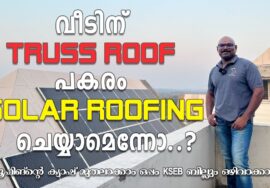
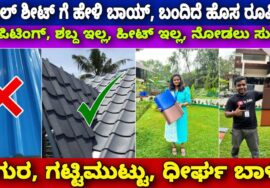
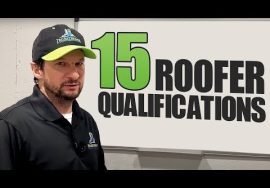
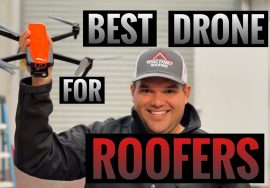
Very well done and instructive advice.
In my opinion it’s best to dispense with mounting solar panels on the roof and put them on the ground instead. One problem with putting them on the roof is they may not be lined up the correct direction to effectively collect the sunlight. I would consider buying tilt mounts from a solar panel equipment dealer and using them as ground mounts which can be moved around as desired to get the panels facing the right direction.
They are more likely to be oriented correctly on the ground. You can move the mounts, you cant move your house.
Would probably be most ideal (aiming, ease of cleaning/maintenance, etc.) but it’s not an option on every house. I live on a small lot so my only real option would be on the roof.
A lot of people dont have the space for it. Also you would need to have those mounts cemented into the ground
Not even an option at my location. I have to go with roof mount, but fortunately my roof is perfectly south-facing, no trees or sources of shade whatsoever (2nd story no trees around at all) and its tilted at 30 degrees. Yes, with ground mount or tilt mounts it would be more efficient to change as the seasons change, but I DO have a budget.
naw, especially in hot places one of the massive benefits of solar on roof is it blocks the sun from heating up the attic. large AC power decrease.
Good video and easy to follow instructions. Thank you
No problem! Anytime. You can always visit our website at http://www.wholesalesolar.com to learn more about DIY solar and contact our techs.
Great video with a very thorough explanation. One question: How can I do a similar installation with a metal roof?
Hi J! Standing seam metal roofs are really easy because the clamp just bolts onto the metal seam, no drilling through the roof. For other types of metal rooftops you typically end up drilling into the sheet metal or the structure underneath there are specific clamps for the different types of roof profiles. here’s the clamp product for the standing seam: https://www.wholesalesolar.com/6990065/sunmodo/racking/sunmodo-1-ez-standing-seam-clamp and here is bolt for most flat mounting surfaces: https://www.wholesalesolar.com/6999503/snapnrack/racking/snapnrack-metal-roof-base-assembly. Our senior techs can help you further at http://www.wholesalesolar.com
@Unbound Solar Links don’t work, at least not from Thailand.
I got a metal roof too on my mobile home.
@Foos Research works for me. Philippines.
Fantastic, professional, easy to understand and VERY thorough! Great job!
And just out of curiosity: how COLD was it in that room?? You couldn’t tell by your extremely professional presentation, but I did happen to see your breath on numerous occasions! Haha
ditto
Yeah looks like he was probably freezing his arse off. Did well despite it!
You can use power tools for bolting flashing. It’s actually safer with torque control
I’ve seen the Iron Ridge system. Pretty cool system. I want to build a portable ground-mount system for off-grid use, about 1 KW plus (3 or 4 large panels). My thought is a pipe frame that sets on top of the ground, elevates the panels, and holds them at the correct angle. I’ve seen Iron Ridge has a solution for ground mount. To finish off the system an outdoor-rated inverter and battery system. I like those SimpliPhi batteries, but they are $$$.
Excellent presentation. Clear, informative and it looks complete.
JoeB
You have to caulk from under the shingle , injection does work but not as good anytime you drill a hole and just caulk it , use your flat bar to hold the shingle up and shoot a quarter sized dollop on the hole and then press the top shingle down and then smooth out the caulk that squeezed out of the hole making a good marriage between the shingles
Very good instructions step. By step , good job Jeremy
You have really done a great job, here! But how do you manage a roof top whose orientation isn’t linear but oval or curved. I mean how do you position the mounting rails on a curved roof?
Get curved arrays
Suggest a view up close of fasteners into rails. Also, did you address final tightening of rail to flashing mount bolt prior to panel placement?
How do you adjust the panel angle if the roof is a little lower slope than you need? Do you have longer flashing attachments to raise the top of the panel up?
What do you do with a exposed fastener metal roof? I can’t use the flashing to close to the ridges of the metal. I have furring strips and need the panels to go in landscape orientation. Is it good to put rails vertical or clamp panels on the short side?
Or drill the pilot hole under the shingle. Less chance of leakage vs drilling where you drilled.
Great video, I’m planning on doing a small solar set up myself on my roof. I’ll be working with a metal roof
What a well-constructed video presentation. Well done. So interesting and informative.
Really good overview of the panel and racking system install. Do you have a follow on video that shows the wiring from panels to meter?
Nice job. Instead of a drill bit, you can use a piece of long white electrical wire (like for plugs and lights) and stick it in the whole. It will be easier to spot. My attic doesn’t have that much room to move around looking for stuff. It is low and has Hvac stuff up there.
Is there a best practice to prevent the solar panel wires from sagging too close to the roof or touching the shingles? I’m not talking about the q cables between the micro inverters, but the actual solar panel wiring.